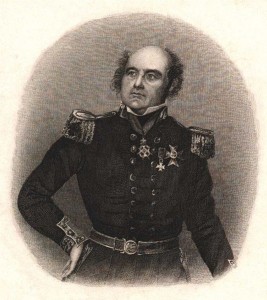Hunting for Erebus and Terror
by Heather Pringle
August 15, 2008
Let me confess right up front that I have a huge amount of admiration for nautical archaeologists, a breed who know all too well the bitter taste of disappointment. Most nautical archaeologists spend their careers on land scraping together meager grants and occasional corporate gifts to excavate and painstakingly conserve our underwater heritage, from Bronze Age merchant ships to 16th-century Spanish galleons. Meanwhile, treasure hunters flush with funds from naïve investors and armed with costly technology roam the world’s seas freely, plundering ships for gold.
Like everyone who follows nautical archaeology, I am accustomed to reading bad news stories dressed up as something glowing. Journalists are often sucked in by the claims of treasure hunters, who pretend they are interested in real science. But this morning I had a wonderful surprise when I began reading the news: the Canadian government is financing a major new search for two legendary ships—HMS Erebus and HMS Terror, lost in the ill-fated Franklin Expedition in the Canadian Arctic.
In 1845, Sir John Franklin and a crew of more than 120 men departed with great fanfare from Britain in Erebus and Terror, intent on becoming the first to sail through the Northwest Passage. The mission ended in disaster, however, with the disappearance of the entire crew. In the years that followed, numerous would-be rescuers risked their lives to search for survivors. During the late 1850s, however, a team led by Francis McClintock discovered that Franklin’s men had abandoned their two ships in the ice off King William Island and perished in the extreme cold, most near Victory Point.
The tragic story of the Franklin Expedition has long inspired artists, from songwriter James Taylor to novelist Margaret Atwood. And of course, many nautical archaeologists have dreamed of finding and excavating Franklin’s ships. The new Canadian expedition will be led by one of the world’s pre-eminent underwater archaeologists, Robert Grenier, head of the underwater unit at Parks Canada. Grenier is the man who directed the excavation of the 16th-century Basque galleon in Red Bay, Newfoundland, and recently published a massive five-volume report on that work, which has been called “a milestone in the history of marine archaeology.â€
It seems that the Canadian government has finally taken this step for largely political reasons. Canadians are keen to reinforce their claims of sovereignty over the Northwest Passage, particularly as the world warms and the passage becomes ice-free. But all of this is very good news for science, and I can think of no one better than Grenier to lead this immensely important search.
Comments posted here do not represent the views or policies of the Archaeological Institute of America.







 Heather Pringle is a freelance science journalist who has been writing about archaeology for more than 20 years. She is the author of Master Plan: Himmler's Scholars and the Holocaust and The Mummy Congress: Science, Obsession, and the Everlasting Dead. For more about Heather, see our
Heather Pringle is a freelance science journalist who has been writing about archaeology for more than 20 years. She is the author of Master Plan: Himmler's Scholars and the Holocaust and The Mummy Congress: Science, Obsession, and the Everlasting Dead. For more about Heather, see our 



